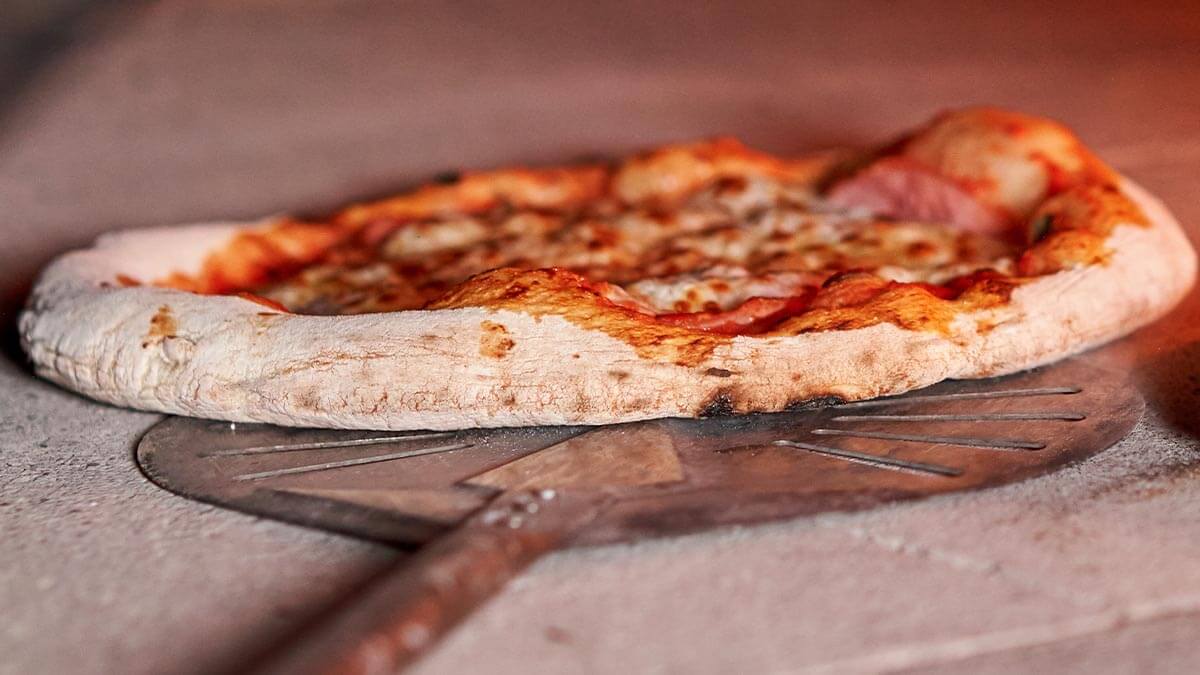Table of Content
- The Rise of the Outdoor Pizza Oven
- Wood-Fired Pizza Ovens: Authentic Flavor and Traditional Appeal
- Gas Pizza Ovens: The Convenience of Modern Technology
- Electric Pizza Ovens: Precision and Versatility for Every Kitchen
- Essential Tools Beyond the Oven: Pizza Pans, Cutters, and Peels
- Investing in the Right Pizza Equipment: A Cost-Benefit Analysis
- Sustainability and Energy Efficiency in Pizza Production
- Pro tip
- Conclusion
1. The Rise of the Outdoor Pizza Oven
The popularity of outdoor pizza ovens has surged in recent years. The outdoor pizza oven is not just a cooking appliance; it's a statement piece that enhances the ambiance and appeal of any outdoor dining space. More and more restaurants and catering businesses are recognizing the value of offering a unique dining experience.
They are also interested in pizza making as an event itself. Outdoor pizza ovens provide that visual appeal, allowing customers to witness the pizza-making process and enjoy the aroma of freshly baked pizza. What factors have contributed to the growing popularity of outdoor pizza ovens?
2. Wood-Fired Pizza Ovens: Authentic Flavor and Traditional Appeal
Wood-fired pizza ovens represent the traditional approach to pizza making, cherished by many for the unique smoky flavor they impart to the pizza. This distinct flavor profile, difficult to achieve with other oven types, arises from the use of wood as the primary fuel source. Furthermore, wood-fired pizza ovens are renowned for their ability to reach exceptionally high temperatures, a crucial factor in creating a perfectly crispy crust and evenly cooked toppings.
The authenticity of a wood-fired pizza oven offers a unique selling proposition. Many customers are drawn to the traditional pizza-making experience they represent. The smoky flavor and the characteristic charring achieved with a wood fire are highly desirable attributes. These ovens can reach temperatures exceeding 800°F (427°C), essential for achieving the crispy crust and quick cooking times associated with Neapolitan-style pizza. The visual appeal of a wood fire adds to the ambiance and can be a significant draw for customers.
However, mastering a wood-fired pizza oven requires skill and experience, presenting a steeper learning curve compared to gas or electric pizza ovens. Controlling the fire and maintaining consistent temperatures can be challenging. Additionally, these ovens require regular cleaning to remove ash and soot, along with periodic inspections of the chimney and firebox. The cost of wood can fluctuate depending on the type and availability in your region. Lastly, wood-fired pizza ovens typically require more space and proper ventilation.
Businesses must consider whether the investment in time and effort to master this type of oven aligns with their business model. How does the authentic flavor profile of wood-fired pizza align with your brand identity?
3. Gas Pizza Ovens: The Convenience of Modern Technology
Gas pizza ovens offer a convenient and efficient alternative to wood-fired models. Their quick heating times and precise temperature control make them a popular choice for busy pizzerias and restaurants. They utilize natural gas or propane as fuel, providing ease of use.
One of the primary advantages of gas pizza ovens is their ease of operation. Temperature control is simpler and more precise than with wood-fired ovens. They heat up quickly, reducing wait times for customers, and maintain consistent temperatures, crucial for baking pizzas evenly. Furthermore, gas pizza ovens produce less ash and soot, simplifying cleaning and maintenance.
However, while gas pizza ovens produce excellent pizza, some argue that they lack the distinct smoky flavor imparted by wood-fired ovens. Additionally, a gas line or propane tank is required, which can limit placement options. The upfront investment for a gas oven might also be higher.
4. Electric Pizza Ovens: Precision and Versatility for Every Kitchen
Electric pizza ovens are gaining popularity in the B2B sector due to their versatility, ease of use, and precise temperature control. They are suitable for various kitchen settings, including restaurants, food trucks, and catering operations. They offer exceptional temperature control, allowing for consistent baking results. This precision makes them suitable for a wide range of pizza styles, from thin-crust to deep-dish.
Modern electric pizza ovens are designed with energy efficiency in mind, potentially leading to cost savings over time. Unlike wood-fired or gas pizza ovens, they do not require special ventilation and do not produce fumes, adding to their appeal in various settings.
However, like gas pizza ovens, electric pizza ovens may not impart the same smoky flavor as wood-fired ovens. Electricity costs can be a significant factor depending on your region. Some models may also take longer to preheat compared to gas models.
5. Essential Tools Beyond the Oven: Pizza Pans, Cutters, and Peels
While the oven is the centerpiece, other tools are equally essential for an efficient and high-quality pizza operation. Pizza pans, cutters, and peels are crucial for a streamlined pizza-making process.
Pizza pans come in various materials like aluminum, steel, and cast iron, each offering different heat conduction properties that affect the crust's texture. They range in size and depth to accommodate different pizza styles. Perforated pizza pans allow for better airflow, resulting in a crispier crust, while solid pizza pans are ideal for deep-dish or thick-crust pizzas.
Pizza cutters, most commonly wheel cutters with a sharp, rotating blade, are essential for serving. Rocker cutters, with a long, curved blade, offer quick and efficient slicing. Stainless steel is the preferred material for pizza cutters due to its durability and resistance to rust.
Pizza peels, typically made of wood or metal, are used to transfer pizzas in and out of the oven. Wood peels offer good grip, while metal peels are easier to clean and more durable. The shape (rectangular or round) and handle length are important for safe and efficient use.

6. Investing in the Right Pizza Equipment: A Cost-Benefit Analysis
Choosing the right pizza equipment is a significant investment for any B2B, necessitating a thorough cost-benefit analysis. Key factors to consider include the initial investment (cost of the oven, pans, cutters, and other tools), operating costs (fuel, maintenance, and labor), and production capacity (how many pizzas the oven can produce per hour).
You should also evaluate the impact of the equipment on product quality. Does it help you achieve the desired pizza quality and consistency? Finally, consider the return on investment (ROI). How quickly will the investment pay for itself through increased sales and efficiency?
What is the expected lifespan of different types of pizza ovens, and how does this impact the long-term cost of ownership? How does the production capacity of an oven align with your projected sales volume? What is the potential impact of equipment downtime on your business, and how can you mitigate this risk?
Request a consultation to our team and discover how to effectively promote your products on our platform.

8. Pro tip
Prioritize Staff Training to Optimize Your Pizza Production Process:
- Whether you're using a wood-fired, gas, or electric pizza oven, proper training is crucial.
- Your team needs to understand how to use the oven safely and efficiently.
- Your team needs to master the use of all associated tools.
- Invest in comprehensive training programs to ensure consistent product quality.
- Invest in comprehensive training programs to improve operational efficiency.
- Consider training your staff on different types of ovens to ensure flexibility during peak hours.
Get tailored quotes from suppliers that match your specific requirements. Start now by using our "Request for Quotes" page.

9. Conclusion
Choosing the right pizza oven and equipment is a critical decision for any B2B in the pizza industry. By carefully considering factors such as oven type, capacity, fuel source, cost, and sustainability, businesses can make informed choices that drive profitability and growth. Remember that the pizza oven is just one piece of the puzzle. Investing in high-quality pizza pans, cutters, peels, and other tools is equally important for achieving consistent product quality and operational efficiency.
What emerging technologies are poised to revolutionize the pizza industry in the coming years, and how can B2B professionals prepare for these changes? How might automation and robotics impact pizza production, and what are the potential implications for labor and efficiency?
If you want to know more about outdoor pizza ovens, you can read this article on Wikipedia.
Discover more articles about food on europages:
- Glass Food Storage Containers for supermarkets
- Enhance Customer Experience with Innovative Restaurant Packaging
- Advancing Market Potential with Plant-Based Food Innovations
Find Pizza Products for your Project!
- ROSSOFUOCO SRL wood-fired ovens blend innovative technology, like their separate combustion system for cleaner cooking, with traditional designs and aesthetics, offering a range of options for both home and professional use.
- Molino Magri is a five-generation Italian milling company producing a wide range of flours and semi-finished products for various food industries, committed to quality, innovation, and customer satisfaction through customized solutions and collaboration with professionals
- Euro Pizza Products has been a leading producer and supplier of high-quality, 100% natural pizza dough for a diverse global market since 1993, offering expertise, consistency, and support to businesses of all sizes.
- Atlas Export Packaging, a leading Istanbul-based manufacturer, provides eco-friendly, custom packaging solutions globally, offering a wide range of sustainable products from food containers and cups to reusable bags and e-commerce boxes.
- Horeca Equipment offers a wide variety of high-quality, competitively priced professional kitchen equipment for bakeries, pizzerias, fast food establishments, butcheries, restaurants, bars, and cafes in Belgium and France, with personalized customer service and fast, free delivery.

